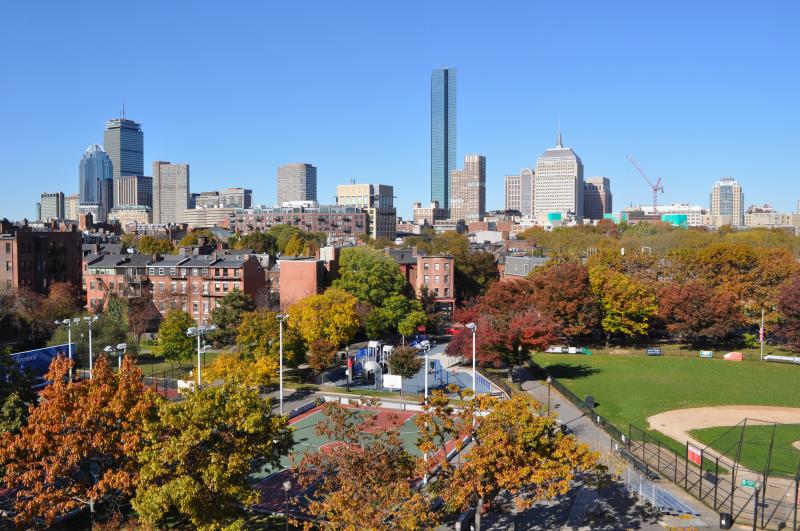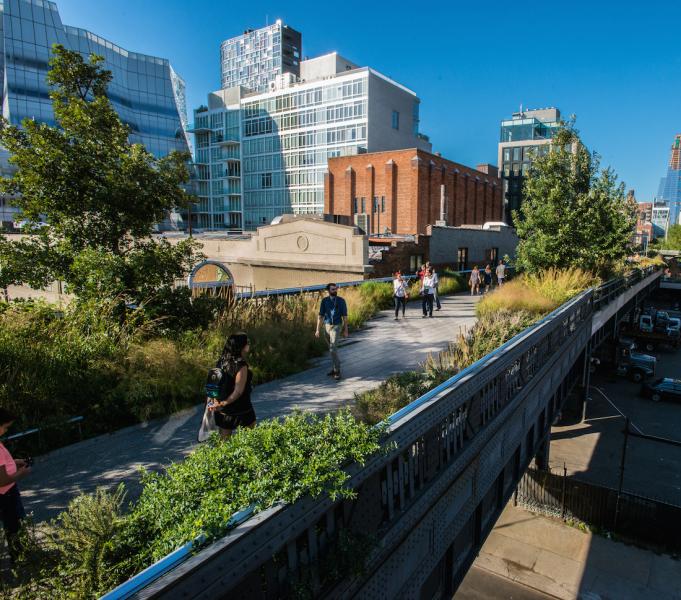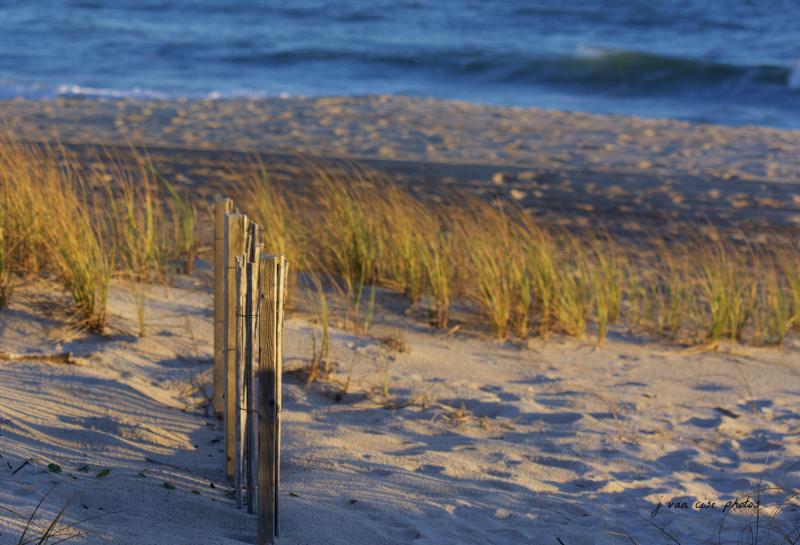Environment and Natural Resources
Urban centers are more than concrete and buildings. In the contiguous United States, nearly 35 percent of urban areas are under tree cover,1 and 20 percent of the nation’s urban and suburban areas encompass natural systems such as rivers, grasslands, or forests.2
As human pressures of development, pollution, and growing populations continue to increase, so too will the stress placed on these urban ecosystems. In addition to non-climate stressors, the impacts of changing climate conditions are also affecting the natural and built environments within cities.
Benefits from nature
Ecosystem services are the benefits that ecosystems provide to people.3 From obvious benefits (such as open space for recreation, protection from floods, and food production) to less-visible ecosystem services (such as carbon sequestration and a reduction in the urban heat island effect), elements of the natural environment provide valuable services that support urban areas.2 As communities look for ways to support adaptation and build resilience in the face of change, many are considering how they might make the most of ecosystem services through the use of green infrastructure.
The term green infrastructure encompasses a range of strategies that utilize ecosystem services and natural systems for adaptation and resilience. Other terms associated with the concept include natural infrastructure, ecosystem-based adaptation, green-gray infrastructure, and natural and nature-based features.
The scale of green infrastructure projects ranges from site-specific interventions, such as building rain gardens, to regional-scale tasks, such as piecing together patches of landscape into patterns that facilitate species migration, large-scale hydrologic function, and recreational trail systems.4
In order to incorporate green infrastructure into community management and adaptation plans, decision makers need information about how nature-based strategies can reduce their vulnerability to changing climate conditions. They also need information about mechanisms that can help them integrate green infrastructure into their operations and account for its costs and benefits.
Examples of green infrastructure
Some communities are already recognizing the importance of green infrastructure in enhancing community resilience. Innovative green infrastructure projects that are already underway include:
- In January 2016, the City of New Orleans received an award of $141.3 million from the U.S. Department of Housing and Urban Development’s National Disaster Resilience Competition to create their first-ever resilience district. Green infrastructure is the backbone of their proposal.
- The Trust for Public Land is working in several U.S. cities to implement its Climate Smart Cities program. This program promotes the use of green infrastructure—especially urban parks and other undeveloped land—to reduce the urban heat island effect. Participating cities also work to increase efficiency of their transportation systems, protect their shorelines, and manage their storm water.5
- In the wake of Hurricane Sandy, The Nature Conservancy is working with the State of New Jersey to understand the value of coastlines and various coastal habitats. This assessment will help them promote the use of natural solutions—such as beaches, dunes, and marshes—to build resilience to flooding and storms, and emphasize the need for conservation and restoration of natural systems.6
- 1Nowak, D. J., S. M. Stein, P. B. Randler, E. J. Greenfield, S. J. Comas, M. A. Carr, and R. J. Alig, 2010: Sustaining America’s Urban Trees and Forests. U.S. Department of Agriculture Forest Service, Northern Research Station, General Technical Report NRS-62, 28 pp.
- 2a2bThe John Heinz III Center for Science, Economics, and the Environment, 2008: The State of the Nation’s Ecosystems: Measuring the Lands, Waters, and Living Resources of the United States. Island Press, 368 pp.
- 3Millennium Ecosystem Assessment, 2005: Ecosystems and Human Well-Being: Current State and Trends, R. Hassan, R. Scholes, and N. Ash, Eds. Island Press, 948 pp.
- 4Dramstad, W. E., J. D. Olson, and R. T. T. Forman, 1996: Landscape Ecology Principles in Landscape Architecture and Land-Use Planning. Island Press, 80 pp.
- 5The Trust for Public Land, 2016: Climate-Smart Cities™. Accessed August 2016.
- 6The Nature Conservancy, 2016: Post-Sandy: Natural Habitats Vital to Protecting Coasts. Accessed August 2016.



